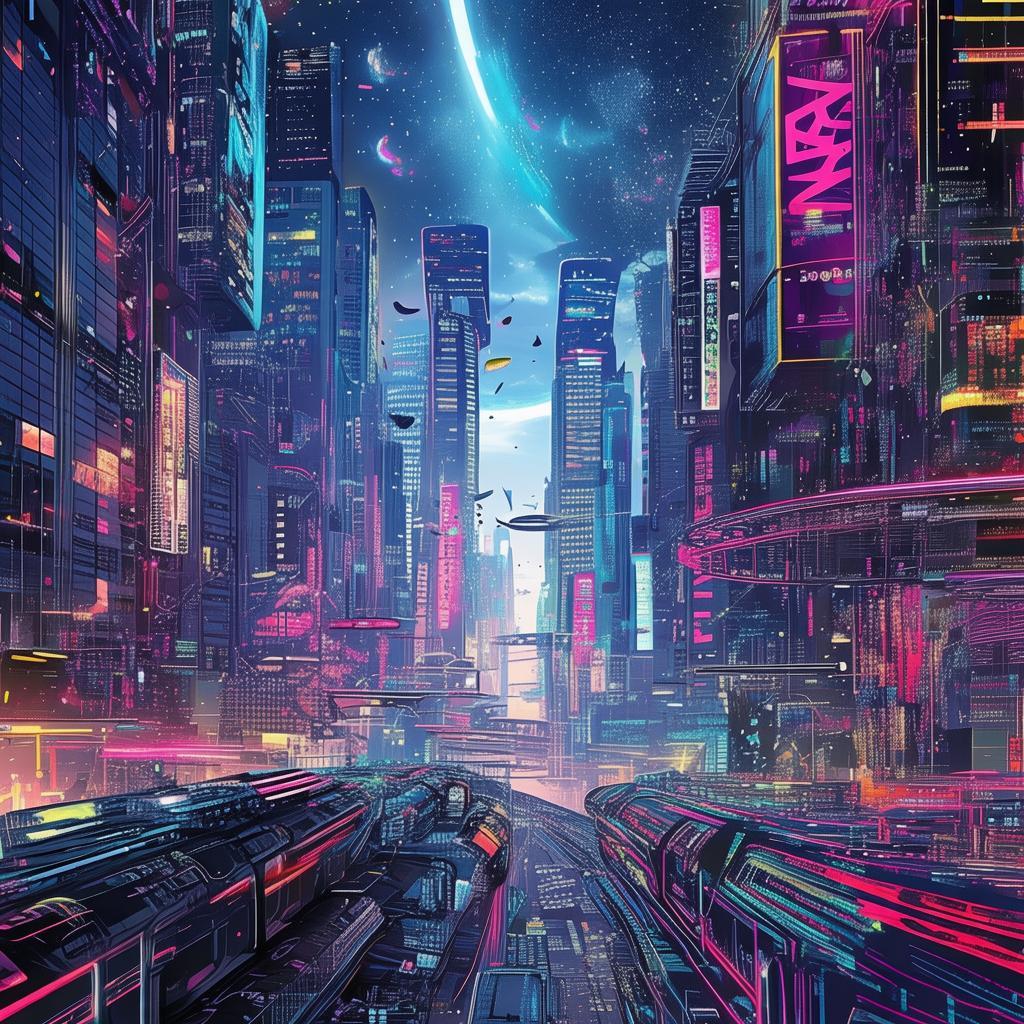Architects of Eternity: The Paradox of Temporal Design
In the year 2147, the world had reached a zenith of technological advancement, where the boundaries between the physical and digital realms blurred. Amidst this, there existed a rare and enigmatic profession: temporal architects. They were the creators of labyrinths woven from the fabric of time, gateways that allowed travelers to traverse the past and future with a single step.
Ezekiel, a man of modest origins with an unyielding passion for architecture, had stumbled upon this esoteric craft. His genius lay in the intricate design of these labyrinths, which he called "The Labyrinthine Labyrinth." Ezekiel's creations were not mere architectural marvels; they were living entities, pulsing with the rhythm of time itself.
The first labyrinth Ezekiel designed was called "Eternity's Bane." It was intended to be a place where people could visit their past and reflect on their lives, a sanctuary for self-discovery. However, the labyrinth was soon co-opted by a secret society known as "The Temporal Keepers," who saw it as a means to manipulate the course of history.
Ezekiel, unaware of the labyrinth's dark purpose, was drawn into a world where the line between fiction and reality was razor-thin. As he became more deeply entwined with the Temporal Keepers, he discovered that their true intention was to use his labyrinths as a means to control the very fabric of time.
One day, Ezekiel received a message from an unknown source. "Ezekiel, your creations have become the greatest threat to the fabric of reality. You must choose: design the next labyrinth to restore balance or succumb to the darkness of temporal control."
Caught in a web of deceit, Ezekiel realized that his designs were more than mere architectural marvels; they were gateways to an eternal paradox. As he delved deeper into the labyrinth of time, he began to unravel a secret that could reshape the world as he knew it.
The Temporal Keepers, emboldened by Ezekiel's genius, presented him with a new challenge: to design a labyrinth that could predict the future and alter the past simultaneously. They believed that with this labyrinth, they could secure their power over time and reality.
Ezekiel, torn between his loyalty to the Temporal Keepers and his growing belief in the sanctity of time, embarked on a journey that would test the very essence of his being. He sought the help of an old mentor, a former temporal architect named Aria, who had been exiled for her beliefs about the sanctity of time.
Aria warned Ezekiel of the dangers of temporal manipulation. "Each labyrinth you design alters the very fabric of time, Ezekiel. There is no turning back once you cross the threshold. The paradox of time is a dangerous game, and the stakes are reality itself."
Together, Ezekiel and Aria embarked on a quest to find the key to balancing time. They traveled through the labyrinths of history, encountering figures from the past and future, each with their own story and lesson to impart.
In the depths of the labyrinth, Ezekiel faced a moral dilemma: to continue designing for the Temporal Keepers or to risk everything to restore the sanctity of time. The labyrinth of the future revealed itself to him, a place where the present was indistinguishable from the past, and the fabric of reality was threadbare.
With each step, Ezekiel's mind grappled with the paradoxes he had created. The Temporal Keepers, growing impatient, threatened to unleash their ultimate labyrinth, a device capable of unraveling time itself. Ezekiel knew that he had to act quickly, for the fate of reality rested on his shoulders.
In a climactic confrontation, Ezekiel and Aria designed a labyrinth that could counter the Temporal Keepers' plans. They called it "The Labyrinthine Labyrinth A Time-Traveling Architect's Dilemma," a labyrinth that would force the Temporal Keepers to confront the consequences of their actions.
As Ezekiel stepped through the threshold of the labyrinth, he faced a vision of himself, older and wiser, who had already navigated this same dilemma. "You have done well, Ezekiel," the older version of himself said. "But remember, the paradox of time is a delicate balance. Do not seek to control it, for it is the ultimate expression of free will."

With a newfound understanding of the paradox of time, Ezekiel returned to the present, the labyrinth he had designed standing as a testament to his struggle. The Temporal Keepers, defeated by Ezekiel's actions, were forced to reconsider their methods.
Ezekiel's story spread far and wide, inspiring a new generation of temporal architects to design with the sanctity of time in mind. The Labyrinthine Labyrinth became a symbol of hope, a reminder that the future could be shaped by the choices we make in the present.
As Ezekiel stood before the labyrinth he had designed, he realized that the true power of temporal architecture lay not in control, but in the pursuit of balance and understanding. In the labyrinth of time, Ezekiel had found his purpose, and with it, a new beginning for the future of time travel.
✨ Original Statement ✨
All articles published on this website (including but not limited to text, images, videos, and other content) are original or authorized for reposting and are protected by relevant laws. Without the explicit written permission of this website, no individual or organization may copy, modify, repost, or use the content for commercial purposes.
If you need to quote or cooperate, please contact this site for authorization. We reserve the right to pursue legal responsibility for any unauthorized use.
Hereby declared.









